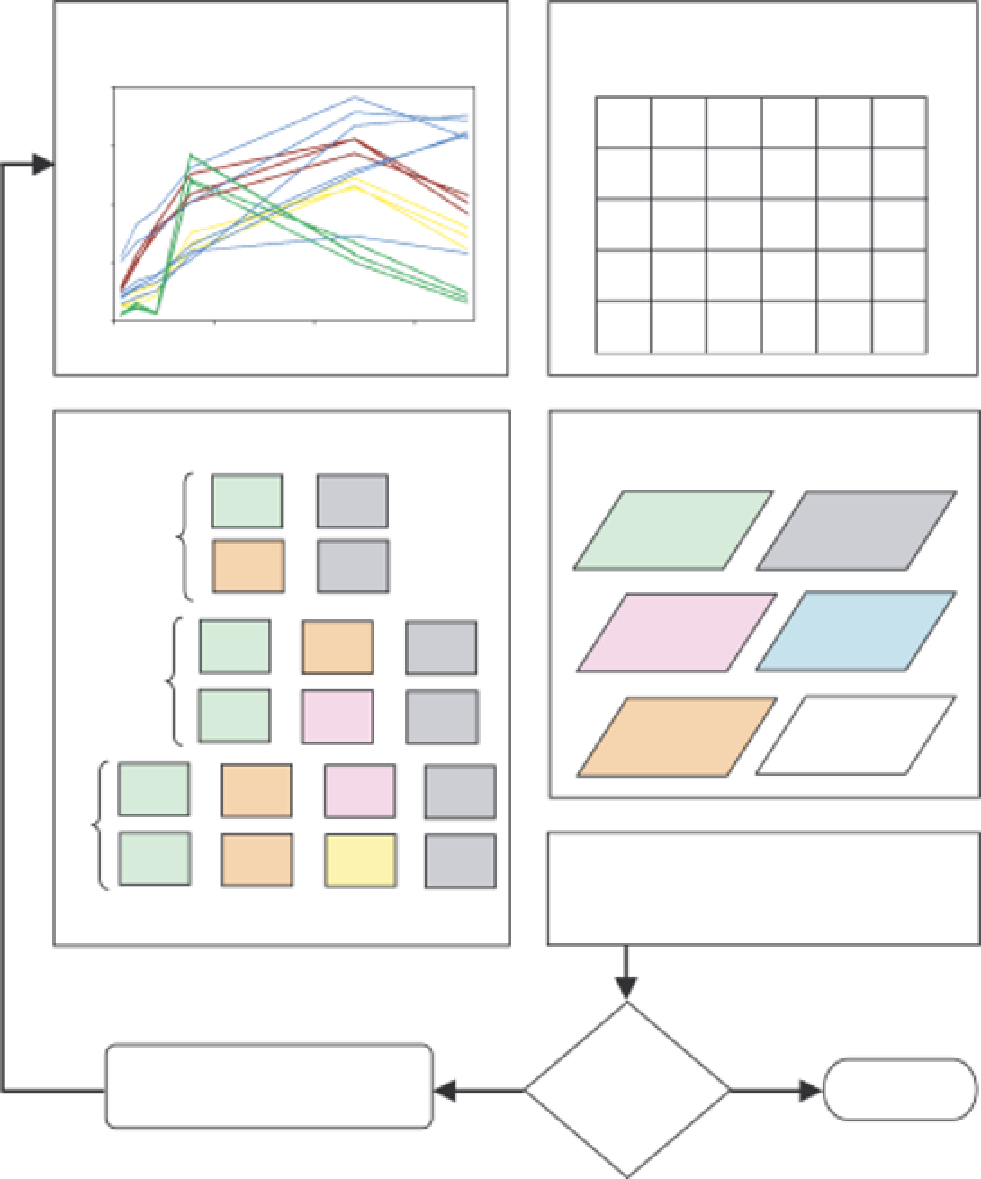Environmental Engineering Reference
In-Depth Information
Step
1: Build endmember library
Step
3: Select the “best” model
for each pixel
M4
M8
M15
M1
M4
M3
M4
M3
M1
M9
M10
M3
M12
M18
M5
M1
M4
M9
M5
M12
M15
M15
M6
M14
M9
M7
M3
M13
M6
M14
Wavelength
Step
2: Test simple SMA models
Step
4: Map V-I-S fractions
emb1
+
shade
Vegetation
Shade
2-
emb
emb2
shade
+
Impervious
RMS error
emb1
+
emb2
+
shade
3-
emb
emb1
+
emb3
+
shade
Model
Complexity
Soil
emb1
+
emb2
+
emb3
+
shade
emb1
+
emb2
+
emb4
+
shade
Step
5:
Assess accuracy of fraction images
etc
....
No
Accuracy
acceptable
?
Yes
Revisit Steps 1, 2, 3
END
FIGURE 8.3
Overview of the MESMA technique to map urban V-I-S components (adapted from Rashed
et al
., 2003).
an imaging spectrometer; these are known as ''reference end-
members.'' Additionally, ''image endmembers'' may be derived
from the image itself or from other images. Reference endmem-
bers have the advantage that they are collected under controlled
conditions and that each spectrum is associated with a specific,
known material. Because they are collected in reflectance mode,
they are easily transported between image platforms and across
dates (Adams
et al
., 1995; Roberts
et al
., 1998a). In contrast, image
endmembers have the advantage that no additional data or field
campaigns are required and that spectra are collected at the same
scale as the data (Roberts
et al
., 1998a; Rashed
et al
., 2003). While
image endmembers are not as readily portable across imaging
platforms, they can be compared across dates and across adjacent
scenes if they are radiometrically intercalibrated (e.g., Roberts
et al
., 1998a). A spectral library may include both reference
and image endmembers, as long as all endmembers in the library
have been radiometrically intercalibrated (e.g., Powell
et al
., 2007;
Powell and Roberts, 2008).
Endmembers selected for a spectral library should be spec-
trally ''pure,'' though the definition of purity will depend on
the scale of analysis (Smith
et al
., 1990). An endmember should
also be representative of other spectra in its own material class
(Song, 2005). Ideally, an endmember will also be spectrally dis-
tinct from spectra in other material classes, though this may be
more or less true, as the primary goal of SMA is to model mate-
rials of interest, not to identify spectra that are mathematically












Search WWH ::

Custom Search